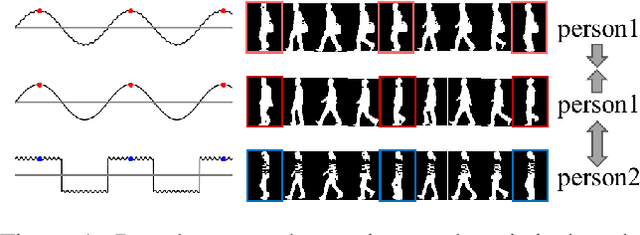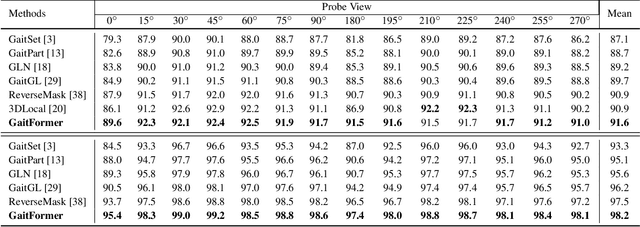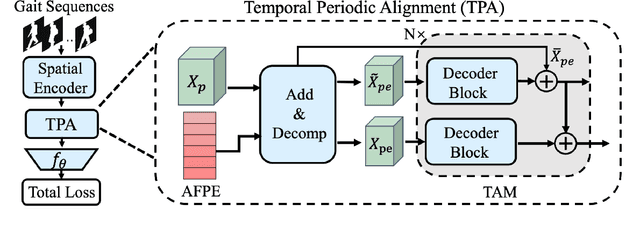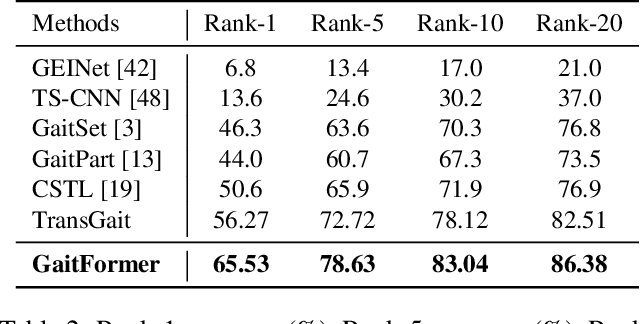Kaixin Xu
Global Graph Propagation with Hierarchical Information Transfer for Incomplete Contrastive Multi-view Clustering
Feb 26, 2025Abstract:Incomplete multi-view clustering has become one of the important research problems due to the extensive missing multi-view data in the real world. Although the existing methods have made great progress, there are still some problems: 1) most methods cannot effectively mine the information hidden in the missing data; 2) most methods typically divide representation learning and clustering into two separate stages, but this may affect the clustering performance as the clustering results directly depend on the learned representation. To address these problems, we propose a novel incomplete multi-view clustering method with hierarchical information transfer. Firstly, we design the view-specific Graph Convolutional Networks (GCN) to obtain the representation encoding the graph structure, which is then fused into the consensus representation. Secondly, considering that one layer of GCN transfers one-order neighbor node information, the global graph propagation with the consensus representation is proposed to handle the missing data and learn deep representation. Finally, we design a weight-sharing pseudo-classifier with contrastive learning to obtain an end-to-end framework that combines view-specific representation learning, global graph propagation with hierarchical information transfer, and contrastive clustering for joint optimization. Extensive experiments conducted on several commonly-used datasets demonstrate the effectiveness and superiority of our method in comparison with other state-of-the-art approaches. The code is available at https://github.com/KelvinXuu/GHICMC.
LPViT: Low-Power Semi-structured Pruning for Vision Transformers
Jul 02, 2024Abstract:Vision transformers have emerged as a promising alternative to convolutional neural networks for various image analysis tasks, offering comparable or superior performance. However, one significant drawback of ViTs is their resource-intensive nature, leading to increased memory footprint, computation complexity, and power consumption. To democratize this high-performance technology and make it more environmentally friendly, it is essential to compress ViT models, reducing their resource requirements while maintaining high performance. In this paper, we introduce a new block-structured pruning to address the resource-intensive issue for ViTs, offering a balanced trade-off between accuracy and hardware acceleration. Unlike unstructured pruning or channel-wise structured pruning, block pruning leverages the block-wise structure of linear layers, resulting in more efficient matrix multiplications. To optimize this pruning scheme, our paper proposes a novel hardware-aware learning objective that simultaneously maximizes speedup and minimizes power consumption during inference, tailored to the block sparsity structure. This objective eliminates the need for empirical look-up tables and focuses solely on reducing parametrized layer connections. Moreover, our paper provides a lightweight algorithm to achieve post-training pruning for ViTs, utilizing second-order Taylor approximation and empirical optimization to solve the proposed hardware-aware objective. Extensive experiments on ImageNet are conducted across various ViT architectures, including DeiT-B and DeiT-S, demonstrating competitive performance with other pruning methods and achieving a remarkable balance between accuracy preservation and power savings. Especially, we achieve up to 3.93x and 1.79x speedups on dedicated hardware and GPUs respectively for DeiT-B, and also observe an inference power reduction by 1.4x on real-world GPUs.
DM3D: Distortion-Minimized Weight Pruning for Lossless 3D Object Detection
Jul 02, 2024



Abstract:Applying deep neural networks to 3D point cloud processing has attracted increasing attention due to its advanced performance in many areas, such as AR/VR, autonomous driving, and robotics. However, as neural network models and 3D point clouds expand in size, it becomes a crucial challenge to reduce the computational and memory overhead to meet latency and energy constraints in real-world applications. Although existing approaches have proposed to reduce both computational cost and memory footprint, most of them only address the spatial redundancy in inputs, i.e. removing the redundancy of background points in 3D data. In this paper, we propose a novel post-training weight pruning scheme for 3D object detection that is (1) orthogonal to all existing point cloud sparsifying methods, which determines redundant parameters in the pretrained model that lead to minimal distortion in both locality and confidence (detection distortion); and (2) a universal plug-and-play pruning framework that works with arbitrary 3D detection model. This framework aims to minimize detection distortion of network output to maximally maintain detection precision, by identifying layer-wise sparsity based on second-order Taylor approximation of the distortion. Albeit utilizing second-order information, we introduced a lightweight scheme to efficiently acquire Hessian information, and subsequently perform dynamic programming to solve the layer-wise sparsity. Extensive experiments on KITTI, Nuscenes and ONCE datasets demonstrate that our approach is able to maintain and even boost the detection precision on pruned model under noticeable computation reduction (FLOPs). Noticeably, we achieve over 3.89x, 3.72x FLOPs reduction on CenterPoint and PVRCNN model, respectively, without mAP decrease, significantly improving the state-of-the-art.
From Algorithm to Hardware: A Survey on Efficient and Safe Deployment of Deep Neural Networks
May 09, 2024Abstract:Deep neural networks (DNNs) have been widely used in many artificial intelligence (AI) tasks. However, deploying them brings significant challenges due to the huge cost of memory, energy, and computation. To address these challenges, researchers have developed various model compression techniques such as model quantization and model pruning. Recently, there has been a surge in research of compression methods to achieve model efficiency while retaining the performance. Furthermore, more and more works focus on customizing the DNN hardware accelerators to better leverage the model compression techniques. In addition to efficiency, preserving security and privacy is critical for deploying DNNs. However, the vast and diverse body of related works can be overwhelming. This inspires us to conduct a comprehensive survey on recent research toward the goal of high-performance, cost-efficient, and safe deployment of DNNs. Our survey first covers the mainstream model compression techniques such as model quantization, model pruning, knowledge distillation, and optimizations of non-linear operations. We then introduce recent advances in designing hardware accelerators that can adapt to efficient model compression approaches. Additionally, we discuss how homomorphic encryption can be integrated to secure DNN deployment. Finally, we discuss several issues, such as hardware evaluation, generalization, and integration of various compression approaches. Overall, we aim to provide a big picture of efficient DNNs, from algorithm to hardware accelerators and security perspectives.
Q-Instruct: Improving Low-level Visual Abilities for Multi-modality Foundation Models
Nov 12, 2023



Abstract:Multi-modality foundation models, as represented by GPT-4V, have brought a new paradigm for low-level visual perception and understanding tasks, that can respond to a broad range of natural human instructions in a model. While existing foundation models have shown exciting potentials on low-level visual tasks, their related abilities are still preliminary and need to be improved. In order to enhance these models, we conduct a large-scale subjective experiment collecting a vast number of real human feedbacks on low-level vision. Each feedback follows a pathway that starts with a detailed description on the low-level visual appearance (*e.g. clarity, color, brightness* of an image, and ends with an overall conclusion, with an average length of 45 words. The constructed **Q-Pathway** dataset includes 58K detailed human feedbacks on 18,973 images with diverse low-level appearance. Moreover, to enable foundation models to robustly respond to diverse types of questions, we design a GPT-participated conversion to process these feedbacks into diverse-format 200K instruction-response pairs. Experimental results indicate that the **Q-Instruct** consistently elevates low-level perception and understanding abilities across several foundational models. We anticipate that our datasets can pave the way for a future that general intelligence can perceive, understand low-level visual appearance and evaluate visual quality like a human. Our dataset, model zoo, and demo is published at: https://q-future.github.io/Q-Instruct.
Efficient Joint Optimization of Layer-Adaptive Weight Pruning in Deep Neural Networks
Aug 24, 2023Abstract:In this paper, we propose a novel layer-adaptive weight-pruning approach for Deep Neural Networks (DNNs) that addresses the challenge of optimizing the output distortion minimization while adhering to a target pruning ratio constraint. Our approach takes into account the collective influence of all layers to design a layer-adaptive pruning scheme. We discover and utilize a very important additivity property of output distortion caused by pruning weights on multiple layers. This property enables us to formulate the pruning as a combinatorial optimization problem and efficiently solve it through dynamic programming. By decomposing the problem into sub-problems, we achieve linear time complexity, making our optimization algorithm fast and feasible to run on CPUs. Our extensive experiments demonstrate the superiority of our approach over existing methods on the ImageNet and CIFAR-10 datasets. On CIFAR-10, our method achieves remarkable improvements, outperforming others by up to 1.0% for ResNet-32, 0.5% for VGG-16, and 0.7% for DenseNet-121 in terms of top-1 accuracy. On ImageNet, we achieve up to 4.7% and 4.6% higher top-1 accuracy compared to other methods for VGG-16 and ResNet-50, respectively. These results highlight the effectiveness and practicality of our approach for enhancing DNN performance through layer-adaptive weight pruning. Code will be available on https://github.com/Akimoto-Cris/RD_VIT_PRUNE.
GaitFormer: Revisiting Intrinsic Periodicity for Gait Recognition
Jul 25, 2023



Abstract:Gait recognition aims to distinguish different walking patterns by analyzing video-level human silhouettes, rather than relying on appearance information. Previous research on gait recognition has primarily focused on extracting local or global spatial-temporal representations, while overlooking the intrinsic periodic features of gait sequences, which, when fully utilized, can significantly enhance performance. In this work, we propose a plug-and-play strategy, called Temporal Periodic Alignment (TPA), which leverages the periodic nature and fine-grained temporal dependencies of gait patterns. The TPA strategy comprises two key components. The first component is Adaptive Fourier-transform Position Encoding (AFPE), which adaptively converts features and discrete-time signals into embeddings that are sensitive to periodic walking patterns. The second component is the Temporal Aggregation Module (TAM), which separates embeddings into trend and seasonal components, and extracts meaningful temporal correlations to identify primary components, while filtering out random noise. We present a simple and effective baseline method for gait recognition, based on the TPA strategy. Extensive experiments conducted on three popular public datasets (CASIA-B, OU-MVLP, and GREW) demonstrate that our proposed method achieves state-of-the-art performance on multiple benchmark tests.
MS-MT: Multi-Scale Mean Teacher with Contrastive Unpaired Translation for Cross-Modality Vestibular Schwannoma and Cochlea Segmentation
Mar 28, 2023Abstract:Domain shift has been a long-standing issue for medical image segmentation. Recently, unsupervised domain adaptation (UDA) methods have achieved promising cross-modality segmentation performance by distilling knowledge from a label-rich source domain to a target domain without labels. In this work, we propose a multi-scale self-ensembling based UDA framework for automatic segmentation of two key brain structures i.e., Vestibular Schwannoma (VS) and Cochlea on high-resolution T2 images. First, a segmentation-enhanced contrastive unpaired image translation module is designed for image-level domain adaptation from source T1 to target T2. Next, multi-scale deep supervision and consistency regularization are introduced to a mean teacher network for self-ensemble learning to further close the domain gap. Furthermore, self-training and intensity augmentation techniques are utilized to mitigate label scarcity and boost cross-modality segmentation performance. Our method demonstrates promising segmentation performance with a mean Dice score of 83.8% and 81.4% and an average asymmetric surface distance (ASSD) of 0.55 mm and 0.26 mm for the VS and Cochlea, respectively in the validation phase of the crossMoDA 2022 challenge.
MetaGrad: Adaptive Gradient Quantization with Hypernetworks
Mar 04, 2023Abstract:A popular track of network compression approach is Quantization aware Training (QAT), which accelerates the forward pass during the neural network training and inference. However, not much prior efforts have been made to quantize and accelerate the backward pass during training, even though that contributes around half of the training time. This can be partly attributed to the fact that errors of low-precision gradients during backward cannot be amortized by the training objective as in the QAT setting. In this work, we propose to solve this problem by incorporating the gradients into the computation graph of the next training iteration via a hypernetwork. Various experiments on CIFAR-10 dataset with different CNN network architectures demonstrate that our hypernetwork-based approach can effectively reduce the negative effect of gradient quantization noise and successfully quantizes the gradients to INT4 with only 0.64 accuracy drop for VGG-16 on CIFAR-10.
LE-UDA: Label-efficient unsupervised domain adaptation for medical image segmentation
Dec 05, 2022Abstract:While deep learning methods hitherto have achieved considerable success in medical image segmentation, they are still hampered by two limitations: (i) reliance on large-scale well-labeled datasets, which are difficult to curate due to the expert-driven and time-consuming nature of pixel-level annotations in clinical practices, and (ii) failure to generalize from one domain to another, especially when the target domain is a different modality with severe domain shifts. Recent unsupervised domain adaptation~(UDA) techniques leverage abundant labeled source data together with unlabeled target data to reduce the domain gap, but these methods degrade significantly with limited source annotations. In this study, we address this underexplored UDA problem, investigating a challenging but valuable realistic scenario, where the source domain not only exhibits domain shift~w.r.t. the target domain but also suffers from label scarcity. In this regard, we propose a novel and generic framework called ``Label-Efficient Unsupervised Domain Adaptation"~(LE-UDA). In LE-UDA, we construct self-ensembling consistency for knowledge transfer between both domains, as well as a self-ensembling adversarial learning module to achieve better feature alignment for UDA. To assess the effectiveness of our method, we conduct extensive experiments on two different tasks for cross-modality segmentation between MRI and CT images. Experimental results demonstrate that the proposed LE-UDA can efficiently leverage limited source labels to improve cross-domain segmentation performance, outperforming state-of-the-art UDA approaches in the literature. Code is available at: https://github.com/jacobzhaoziyuan/LE-UDA.
 Add to Chrome
Add to Chrome Add to Firefox
Add to Firefox Add to Edge
Add to Edge